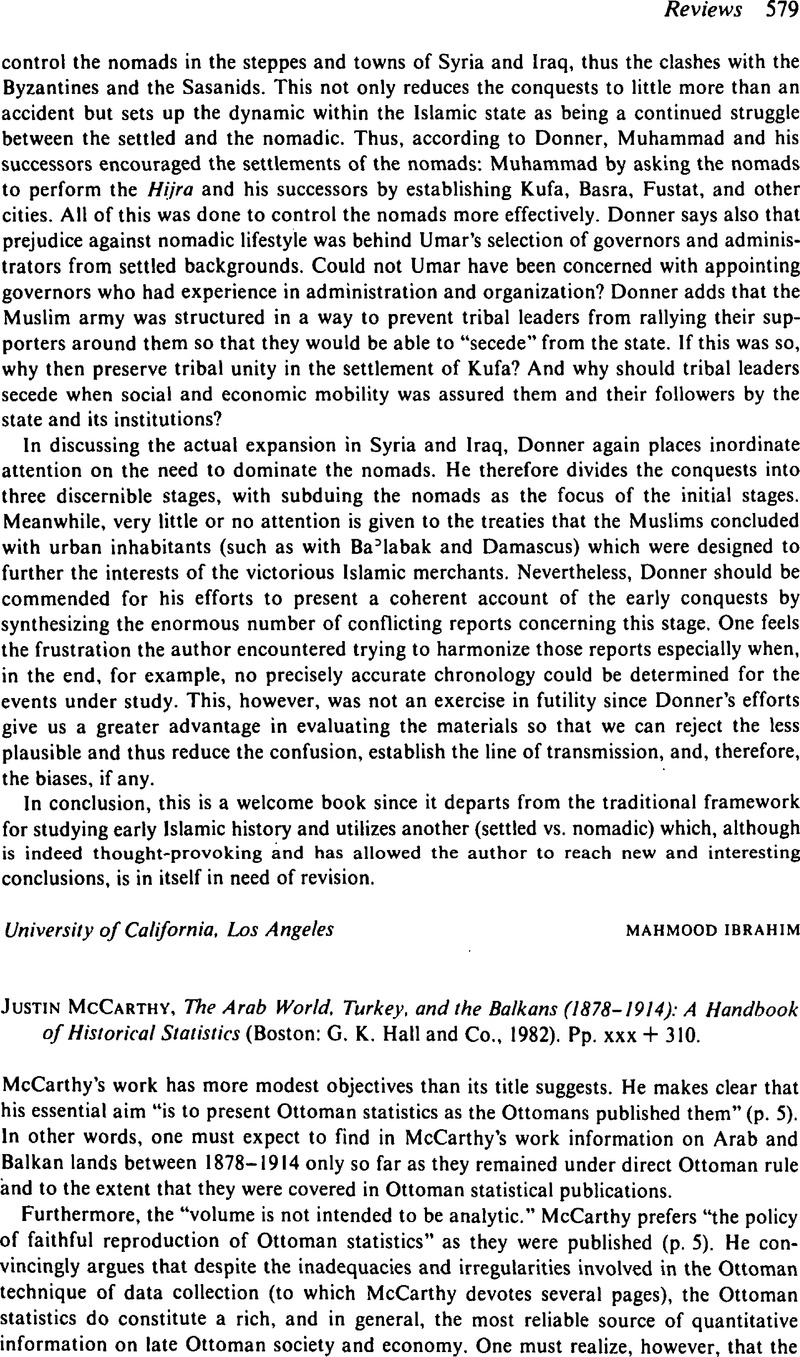No CrossRef data available.
Article contents
Justin McCarthy, The Arab World, Turkey, and the Balkans (1878–1914). A Handbook of Historical Statistics (Boston: G. K. Hall and Co., 1982). Pp. xxx + 310.
Published online by Cambridge University Press: 29 January 2009
Abstract

- Type
- Book Reviews
- Information
- Copyright
- Copyright © Cambridge University Press 1983
References
NOTES
1 To the best of my knowledge, the only other work that can be compared to McCarthy's is Eldem's, VedatOsmanli Imparatorlugu 'nun Iktisadî Şartlari Hakkinda bir Tetkik (Ankara, 1970), which is more analytical but less detailed.Google Scholar
2 The Ottoman lists reflect the importance attributed to each province. They could be rearranged according to the proximity of the provinces, but that is not the criterion used by McCarthy. Incidentally, the “independently administered sub-provinces” of Serfice and Zor and the tributary provinces of Bosnia and Egypt are omitted from McCarthy's list of 1884–85, while other sub-provinces and districts of similar status are not.Google Scholar
3 For example, “Sürye” (Syria), repeated throughout the work, is irritating; it should be spelled “Suriye.” The dotted and undotted i, o, and u, as well as s, ş, t, z and izafe are often improperly and inconsistently used throughout the text. With a little diligence, McCarthy could have avoided these inaccuracies and similar ones such as “Gelenboy” instead of the correct “Gelenbevî (pp. 131. 132), “Mülaziz” instead of “Ma'müretül'azīz” (p. 129), or even “Destroying pious (nasik) properties and documents” which should have been “Destroying and damaging property belonging to others (nâsin)” (p. 141).Google Scholar
4 See the explanatory notes on pp. 48, 59, and passim in 1329–1330 Senesi Ma'ârif-i Umûmiye Ihsâiyât, Mecmûasi, on which McCarthy bases some of his tables. For more detailed information see Ergin, Osman, Türkiye Maarif Tarihi. 2nd print (Istanbul, 1977) pp. 481–486. 495–500, 917–934, 1326, and 1423–1445;Google Scholar and Kodaman, B., Abdulhamid Devri Eĝitim Sistemi (Istanbul, 1980), passim.Google Scholar
5 1329 ve 1331 Seneleri Sanâyi' Istatistigi (Istanbul, 1333), pp. 5–10;Google Scholar also Ökçün, G., ed., Osmanli Sanayii (Ankara, 1970), pp. 2–8.Google Scholar
6 Aybar, Celal, Osmanli İmparatorlugu 'nun Ticaret Muvazenesi, 1878–1913 (Ankara, 1939);Google ScholarSönmez, Attila, “Ottoman Terms of Trade, 1878–1913,” METU Studies in Development, no. 1 (Fall 1970), pp. 111–148;Google ScholarŞevket Pamuk, “Kapitalist Dünya Ekonomisi ye Osmanli Diş Ticaretinde Uzun Dönemli Dalgalanmalar, 1830–1913,” METU Studies in Development, 1979–1980 Special Issue, pp. 161–204, here 184–197;Google Scholar also Pamuk, Ş., “Foreign Trade, Foreign Capital and the Peripheralization of the Ottoman Empire, 1830–1913.” unpublished PhD. thesis. Univ. of California, Berkeley, 1978. Chapter III and Appendix II.Google Scholar




